Prepare to be amazed as we explore these intriguing tidbits and more in this collection of interesting facts about computers.
From the wooden beginnings of the first computer mouse to the pioneering programming skills of Ada Lovelace, the world’s first computer programmer, there are captivating stories waiting to be uncovered.
Did you know that the concept of computer viruses originated from an experiment?
And have you ever wondered how the term “bug” came to be associated with computer malfunctions?
The concept of the modern computer lay in the works of the enigmatic Alan Turing, an English mathematician. However, the foundations were laid by the “father of the computer” Charles Babbage in the 19th century. Computers have shaped and molded the modern era, and we cannot imagine life without them.
To give you more insights into computers, here are 20 fascinating facts about computers:
40 Fascinating Facts About Computers
1. The first known use of the word “computer” was in 1613
The first known use of the word “computer” was in 1613, in a book called The Yong Mans Gleanings by English writer Richard Braithwaite. In this context, the word “computer” refers to a person who performs calculations or computations.
The definition of a computer remained the same until the end of the 19th century when the Industrial Revolution gave rise to mechanical machines whose primary purpose was calculating.
2. The first mechanical computer belongs to the 19th century
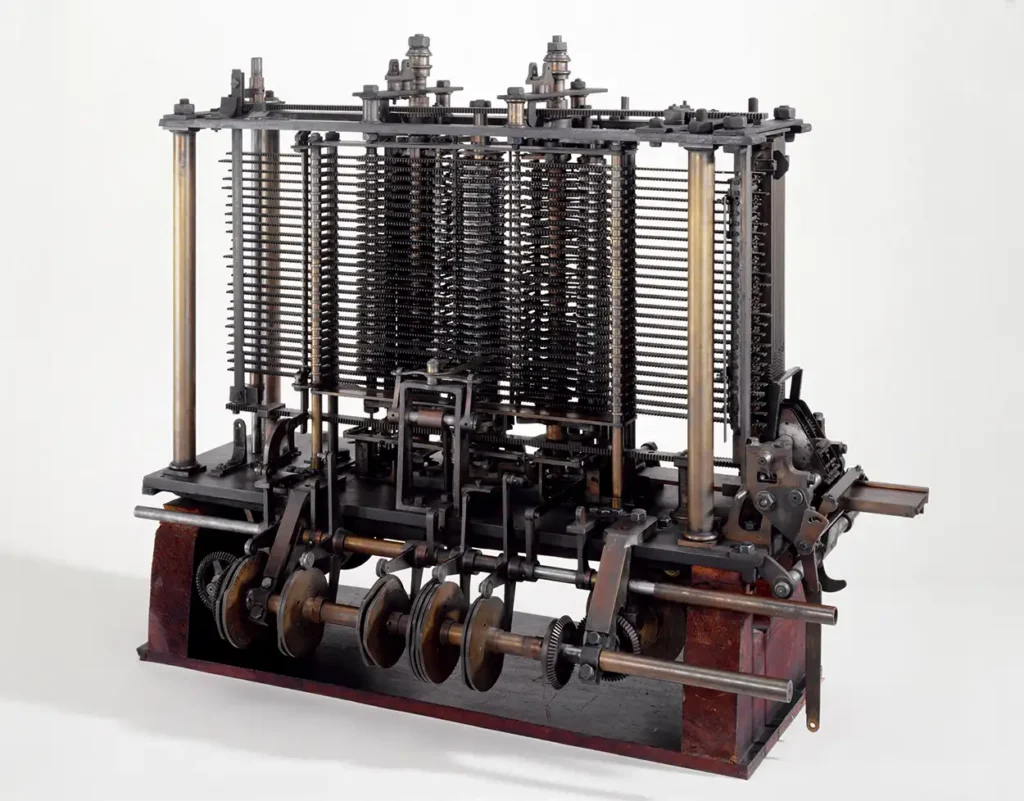
The first mechanical computer, as we understand it today, was developed in the 19th century. It was called the Analytical Engine and was designed by the English mathematician and inventor Charles Babbage.
Charles Babbage conceptualized the Analytical Engine in the 1830s and 1840s. It was intended to be a general-purpose computing device capable of performing various calculations and manipulating data.
3. The first digital computer was huge
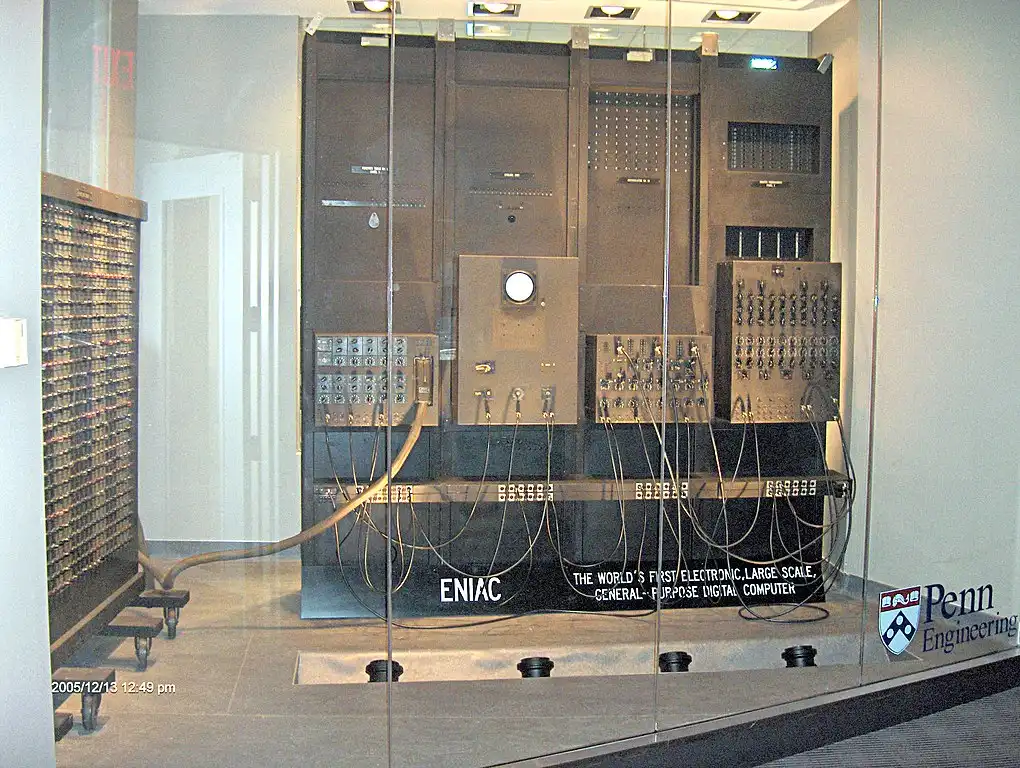
The first digital computer, known as the Electronic Numerical Integrator and Computer (ENIAC), was indeed a massive machine that weighed over 25,000 kilograms (55,000 pounds) and occupied approximately 1800 square feet of floor space.
ENIAC was developed during World War II in the United States and was completed in 1945. It was designed to perform complex calculations and was primarily used for military purposes, such as calculating artillery firing tables.
ENIAC consisted of thousands of vacuum tubes, which were the primary electronic components used for computation at the time. It required significant power consumption and generated a substantial amount of heat. It used punched cards for input and had a combination of electronic circuits, switches, and cables to carry out calculations.
The first digital computer weighed more than 25,000 kilograms and occupied 1800 square feet. Share on X4. We are running low on physical money
According to the Bank for International Settlements, as of March 2022, only about 10.8% of the world’s money was in the form of physical currency, such as coins and paper bills. The remaining 89.2% of the world’s money was in the form of electronic money, such as bank deposits and central bank reserves.
5. What is the longest meaningful word you can type using a single keyboard row?
One of the longest meaningful words that can be typed using a single keyboard row is “typewriter.”
This word consists of 10 letters and can be typed using only the top row of a standard QWERTY keyboard layout. It is a bit of poetic justice.
6. How many computer viruses are there?

According to the Symantec Security Threat Report, more than 6,000 new computer viruses are released every month. This number has been increasing steadily in recent years, as more and more people are using computers and the Internet.
The vast majority of these viruses are harmless or relatively minor. However, a small number of them can be very dangerous, causing significant damage to computers and networks.
Some viruses can steal personal information, such as credit card numbers and passwords. Others can encrypt files and demand a ransom payment in order to decrypt them.
Still, others can simply cause computers to crash or malfunction.
Some of the commons viruses are:
- File infectors
- Boot sector viruses
- Macro viruses
- Polymorphic viruses
- Worms
- Trojan horses
- Ransomware
- Spyware
7. Who invented the mouse?

The computer mouse was invented by Douglas Engelbart, an American engineer, and inventor, in the 1960s. Engelbart’s invention of the mouse was part of his larger vision of augmenting human intellect and improving human-computer interaction.
Douglas Engelbart and his team at the Stanford Research Institute (SRI) developed the first prototype of the mouse in the mid-1960s. The original mouse consisted of a wooden shell with two perpendicular wheels that tracked movement on a surface. It had a single button and a cable connected to the computer.
8. How small is the world’s tiniest computer?
The world’s largest computer is a quantum computer called Sycamore, which is about the size of a grain of rice.
It was built by Google and was announced in 2019.
Sycamore can perform calculations that would be impossible for traditional computers, such as simulating the behavior of molecules and materials.
9. IBM will make a computer that is even smaller than a grain of rice
BM has recently announced that it is developing a new quantum computer called Eagle, which will measure 0.33 mm on each side. This would make it the smallest quantum computer ever built. Eagle is expected to be completed in 2023.
The smaller size of the Eagle will allow it to be more energy-efficient and easier to control. This could make it more practical for real-world applications, such as drug discovery and financial modeling.
The development of Eagle is a significant milestone in the development of quantum computing. It shows that quantum computers are becoming smaller and more powerful and that they are getting closer to being used in practical applications.
10. Are computer passwords secure?
Computer passwords can be secure if they are strong and unique. A strong password is at least 12 characters long and includes a mix of upper and lowercase letters, numbers, and symbols. A unique password is one that is not used for any other account.
According to nuclear safety expert Bruce G. Blair, the US Air Force’s Strategic Air Command worried that in times of need the codes for the Minuteman ICBM force would not be available, so it decided to set the codes to 00000000 in all missile launch control centers. Blair said the missile launch checklists included an item confirming this combination until 1977.
However, the US Air Force has disputed this claim, stating that the code “00000000” was never used to enable or launch a Minuteman ICBM. The Air Force says that the code was used for a different purpose, but it has not disclosed what that purpose was.
The debate over the use of the code “00000000” highlights the importance of security for nuclear weapons. Even a simple code like this could be used by an unauthorized person to launch a nuclear attack. It is essential that the security of nuclear weapons be constantly reviewed and improved to ensure that they cannot be used by anyone who does not have the proper authorization.
11. Organized crime in the computer business?
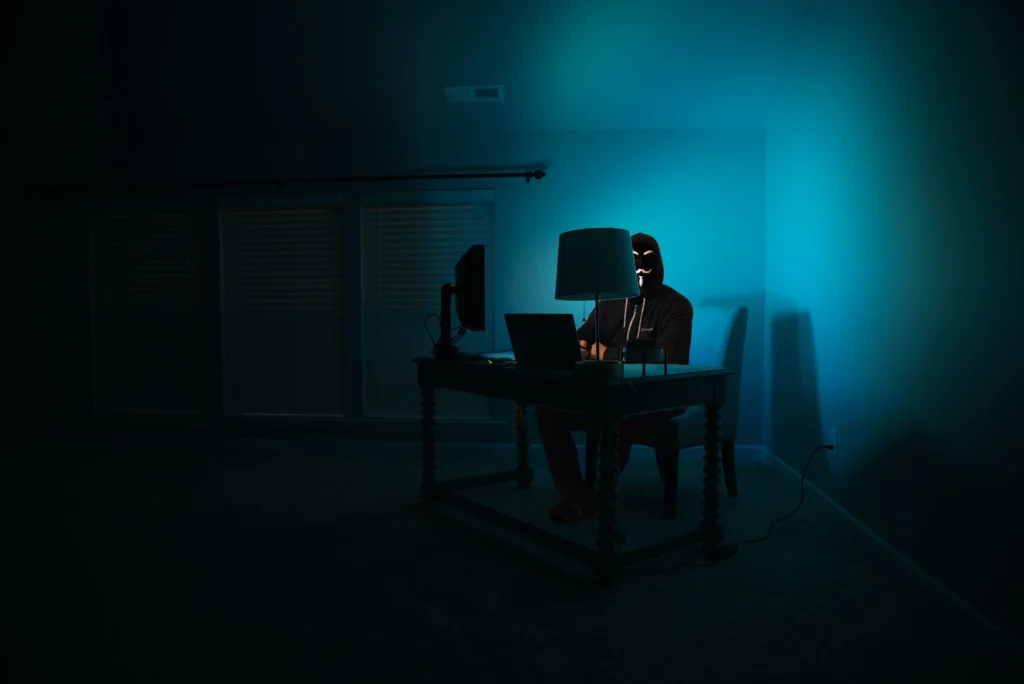
According to a 2022 report by the Cybersecurity & Infrastructure Security Agency (CISA), over 60% of virus creators are on the payroll of criminal gangs. These gangs use viruses to steal personal information, extort money, or disrupt businesses.
The report also found that the number of virus creators working for criminal gangs is increasing. This is due to the fact that viruses can be a very lucrative business. For example, a single ransomware attack can generate millions of dollars in ransom payments.
The report also found that the most common types of viruses created by criminal gangs are ransomware, banking trojans, and crypto-mining malware.
Ransomware encrypts files on a victim’s computer and demands a ransom payment in order to decrypt them.
Banking trojans steal personal information, such as credit card numbers and passwords. Cryptomining malware uses a victim’s computer to mine cryptocurrency without their knowledge.
12. We do not blink when we use a computer
We blink about 15-20 times per minute normally. However, when we use a computer, we tend to blink less often, about 5-7 times per minute.
This is because we are focused on the screen and not paying attention to our blinking.
13. Stop spamming
According to a 2022 report by the Radicati Group, an estimated 70.3% of all emails sent in a day are spam. This means that for every 100 emails you receive, about 70 of them are unsolicited and unwanted.
Spam emails can come from a variety of sources, including:
- Phishing emails: These emails attempt to trick you into revealing personal information, such as your credit card number or password.
- Scam emails: These emails offer you something that seems too good to be true, such as a free vacation or a million dollars.
- Adware emails: These emails contain advertisements for products or services that you may not be interested in.
- Malware emails: These emails contain malicious software that can infect your computer if you open them.
14. Was Windows always Windows?
Windows was originally called Interface Manager. It was codenamed “Interface Manager” before the windowing system was implemented.
However, Rowland Hanson, the head of marketing at Microsoft, convinced the company that the name Windows would be more appealing to customers.
The first version of Windows, Windows 1.0, was released in 1985. It was a graphical user interface (GUI) for MS-DOS, which was the operating system that was most commonly used on personal computers at the time.
Windows 1.0 was not very successful, but it paved the way for future versions of Windows, which became more popular and powerful. Windows 95 was released in 1995 and was a major turning point for the operating system. It was the first version of Windows to be a true 32-bit operating system, and it introduced a number of new features that made it more user-friendly.
15. Back when data was costly in the 1980s
The first 1 GB hard disk drive was the IBM 3380, which was introduced in 1980. It weighed about 550 pounds (250 kilograms) and cost $40,000.
The IBM 3380 used a technology called film heads, which allowed it to store more data on each platter. The film heads were made of a thin film of material that was coated onto a substrate. This allowed the heads to fly closer to the platters, which increased the storage capacity.
The IBM 3380 was a major technological breakthrough, and it helped to pave the way for the development of smaller and more affordable hard disk drives. Today, 1 GB hard disk drives can be purchased for less than $10.
16. The Dirty Dozen
The 12 engineers who designed the IBM PC were nicknamed “The Dirty Dozen” by their colleagues.
The nickname was given to them because they were a group of misfits and outcasts who were not afraid to challenge the status quo.
17. The first microprocessor was created for a calculator
The Intel 4004 was the first commercially available microprocessor, and it was originally designed to be used in calculators.
However, the 4004 was so versatile that it quickly found other applications, such as in computers, telecommunications devices, and even musical instruments.
18. The word “computer” was first attested in the 1640s
The word “computer” was first attested in the 1640s. It was used to describe a person who performed calculations, such as an accountant or a mathematician. The word was not used to describe a machine until the 19th century.
19. The first machine was entirely made by hand
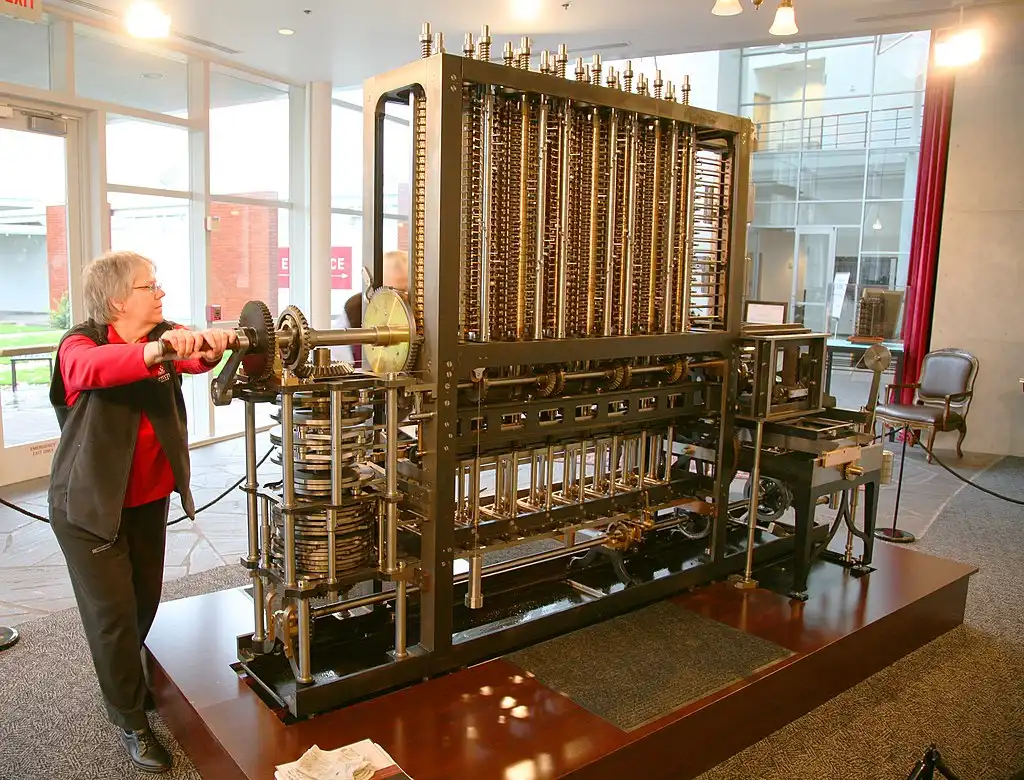
The first computer, the Analytic Engine, was entirely made by hand. It was invented by Charles Babbage in the 1820s. The Analytic Engine was a mechanical computer that was designed to calculate polynomial functions. It was never completed, but it was a major breakthrough in the development of computers.
Babbage designed the Analytic Engine using a system of punched cards. The punched cards were used to store the instructions for the computer. The Analytic Engine also used a number of mechanical gears and levers to perform calculations.
The Analytic Engine was a very complex machine, and it would have been very difficult to build using modern manufacturing methods. However, Babbage was able to build most of the machines by hand. He used a variety of tools and materials, including wood, metal, and leather.
20. We came very close to never having computers
The British government stopped funding Charles Babbage’s work on the Analytical Engine in 1843. There were a number of reasons for this decision, including:
- The Analytical Engine was very expensive to build.
- The technology at the time was not advanced enough to build a machine as complex as the Analytical Engine.
- There was no clear market for the Analytical Engine.
Babbage was disappointed by the government’s decision, but he continued to work on the Analytical Engine on his own. He built a small working model of the machine, and he wrote detailed plans for a full-scale version. However, he was never able to build a full-scale version of the Analytical Engine.
Despite the British government’s decision, Babbage’s work on the Analytical Engine was a major breakthrough in the development of computers. The Analytical Engine was the first computer that used punched cards to store instructions, and it was the first computer that was capable of performing calculations automatically. Babbage’s work inspired the development of later computers, such as the UNIVAC I and the IBM 360.
21. The first personal computer was the Altair 8800, which was released in 1975
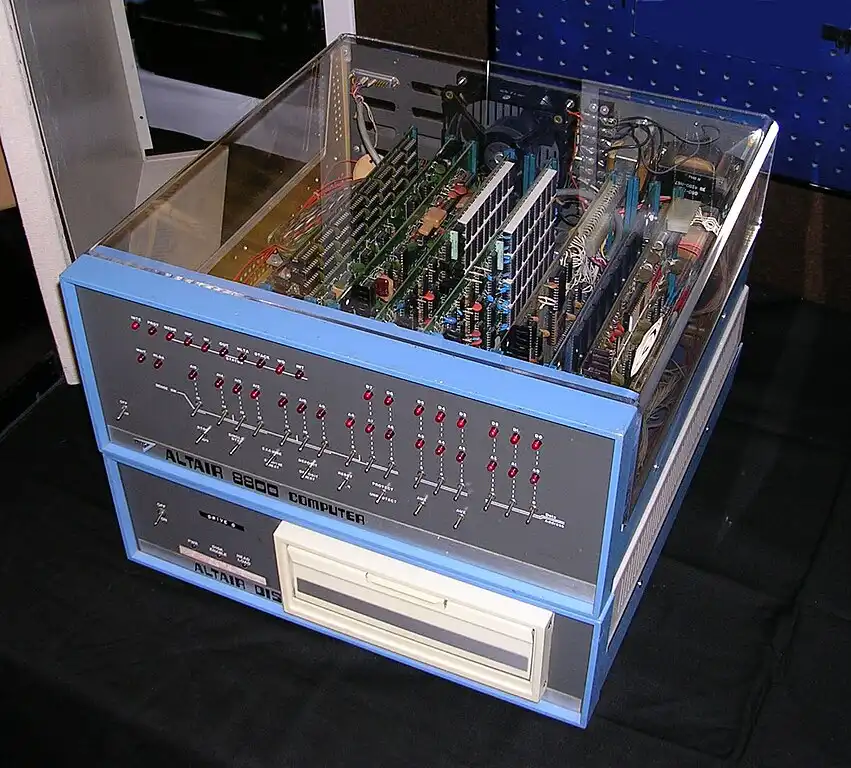
The Altair 8800 is considered one of the first personal computers and played a significant role in the history of computing. It was released in 1975 by Micro Instrumentation and Telemetry Systems (MITS), a company founded by Ed Roberts.
22. The first graphical user interface (GUI) was developed by Xerox PARC in 1973
The first graphical user interface (GUI) was developed by Xerox PARC (Palo Alto Research Center) in 1973. The Xerox Alto was widely recognized as the first computer system to incorporate a graphical user interface.
The Xerox Alto featured a bitmap display, a mouse, and a graphical desktop metaphor with windows, icons, menus, and a pointing device. It also introduced concepts such as overlapping windows, direct manipulation, and the use of a desktop metaphor, which are now standard in modern graphical user interfaces.
23. The first Apple Macintosh computer was released in 1984
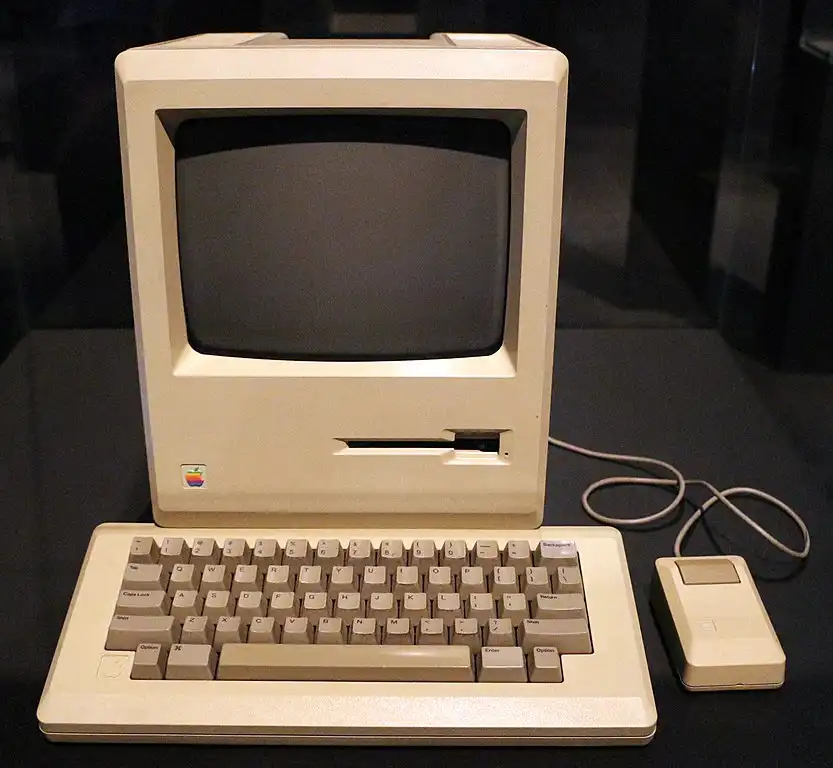
The first Apple Macintosh computer was indeed released in 1984. It was a significant milestone in the history of personal computing and had a profound impact on the industry.
The Apple Macintosh, often referred to as the Macintosh 128K, was introduced to the public on January 24, 1984. It featured a revolutionary graphical user interface (GUI) and a mouse, which made it much more user-friendly compared to other computers of the time.
24. The first Android smartphone was released in 2008
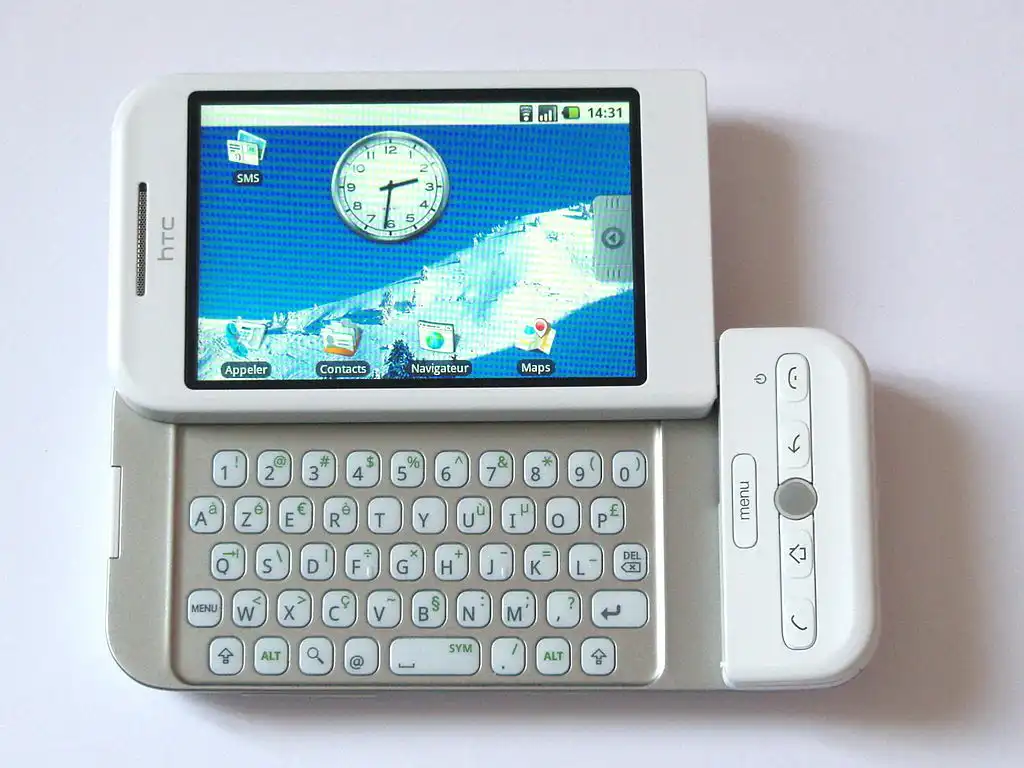
The first Android smartphone was the HTC Dream, also known as the T-Mobile G1. It was released in September 2008 and ran Android version 1.0.
The Dream was a major breakthrough in the smartphone market, as it was the first commercially available smartphone to run Android. It featured a 3.2-inch touchscreen display, a 528 MHz processor, and 192 MB of RAM.
The Dream was also one of the first smartphones to support third-party apps, which helped to make it a popular device.
25. The first iPhone was released in 2007
The first iPhone was released in 2007. It was a revolutionary product that had a profound impact on the mobile phone industry and introduced a new era of smartphones.
The original iPhone, often referred to as the iPhone 2G or iPhone Classic, was unveiled by Apple CEO Steve Jobs on January 9, 2007, and it went on sale in the United States on June 29, 2007.
26. The first computer virus was created in 1971
The first computer virus was created in 1971, called Creeper. It was created by Bob Thomas of BBN Technologies as a security test to see if a self-replicating program was possible.
Creeper would spread from computer to computer over the ARPANET, and would display the message “I’m the creeper, catch me if you can!”.
27. The first spam email was sent in 1978
The first spam email, as it is commonly understood today, was indeed sent in 1978. The sender of the first spam email was Gary Thuerk, a marketer working for Digital Equipment Corporation (DEC).
On May 3, 1978, Thuerk sent a mass email to around 400 recipients on ARPANET, which was an early precursor to the Internet. The email was a promotional message about DEC’s new computer systems and was considered unsolicited and sent to a large number of people without their explicit consent.
28. The first social media platform, Six Degrees, was launched in 1997
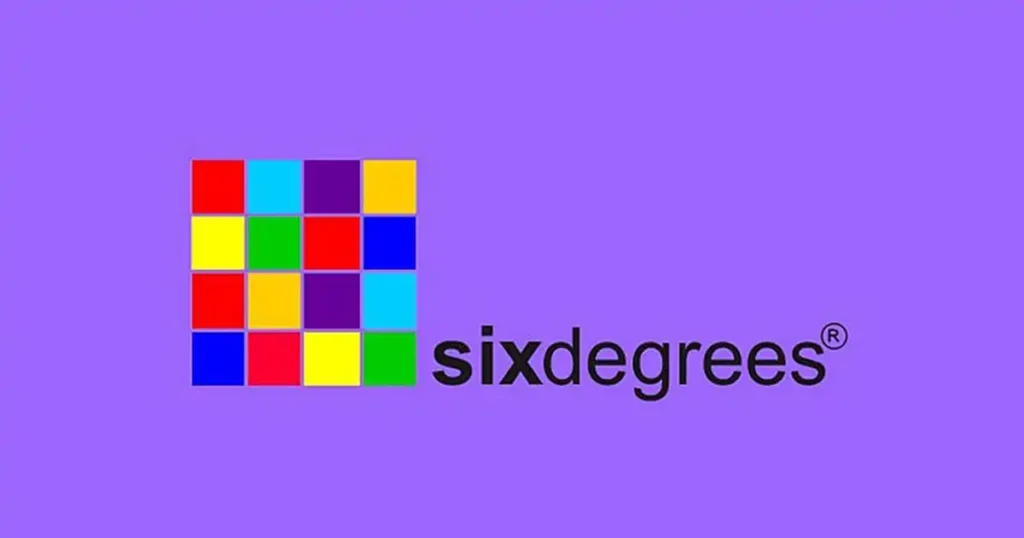
Six Degrees is widely recognized as one of the first social media platforms, and it was indeed launched in 1997.
Six Degrees was founded by Andrew Weinreich and operated from 1997 to 2001. The platform was named after the popular theory of six degrees of separation, which suggests that everyone is connected to each other by no more than six relationships.
Six Degrees allowed users to create profiles, make friends, and send messages to other users. It offered features such as bulletin boards, a people search function, and the ability to create and join groups. Users could also create a “Friends List” and view their connections, which laid the groundwork for the concept of social networking.
Although Six Degrees gained some popularity, it ultimately faced challenges and closed down in 2001 due to various factors, including financial difficulties. However, it played a significant role in paving the way for the development of subsequent social media platforms.
29. The first video game was created in 1958
The first video game, known as “Tennis for Two,” was created in 1958.
“Tennis for Two” was developed by physicist William Higinbotham at the Brookhaven National Laboratory in New York. It was a simple tennis simulation game displayed on an oscilloscope, which was a common piece of equipment in laboratories at the time.
The game allowed two players to control paddles and hit a virtual ball back and forth over a net. It utilized analog circuits to generate the graphics and simulate the physics of the game.
30. The first computer to beat a human chess grandmaster was Deep Blue in 1997
The first computer to defeat a human chess grandmaster in a match was IBM’s Deep Blue, which occurred in 1997.
Deep Blue was a chess-playing supercomputer developed by IBM. It was specifically designed to compete against world chess champion Garry Kasparov. The first match between Deep Blue and Kasparov took place in 1996, but Kasparov won the six-game match with a score of 4-2.
However, a rematch was scheduled in 1997, and Deep Blue made significant advancements in its hardware and software.
The second match, held in May 1997, was a six-game match as well. Deep Blue emerged victorious, winning the match with a score of 3.5-2.5, marking the first time a computer defeated a reigning world chess champion in a match.
31. The first quantum computer was created in 1998
The first quantum computer was created in 1998 by Isaac Chuang, Neil Gershenfeld, and Mark Kubinec of the University of California, Berkeley.
It was a 2-qubit quantum computer, which means that it could store and process two qubits of information. Qubits are the basic unit of information in quantum computing, and they can be in a superposition of two states, 0 and 1.
This means that the first quantum computer could solve problems that were impossible for classical computers to solve.
32. The first artificial intelligence (AI) program to beat a human at Go was AlphaGo in 2016
The first artificial intelligence (AI) program to defeat a human Go grandmaster was AlphaGo, developed by DeepMind, a subsidiary of Google. AlphaGo achieved this milestone in 2016.
In March 2016, AlphaGo competed against Lee Sedol, a South Korean professional Go player who was considered one of the strongest players in the world at the time. The match took place in Seoul, South Korea, and consisted of five games.
AlphaGo won the first three games in the match, securing an overall victory against Lee Sedol. This achievement was significant because Go is an ancient board game known for its complexity and has more possible moves than chess. The success of AlphaGo showcased the capabilities of AI in tackling complex strategic games like Go.
32. The first self-driving car was created in the 1980s
The first self-driving car was created by Ernst Dickmanns in the 1980s. Dickmanns was a German engineer who worked on developing autonomous vehicles at the University of Bundeswehr Munich. In 1987, he converted a Mercedes-Benz van into an autonomous vehicle that could navigate city streets without human input.
Google began developing its own self-driving car project in 2009. The project was led by Sebastian Thrun, who was the former director of the Stanford Artificial Intelligence Laboratory (SAIL). In 2010, Google’s self-driving car made its first public appearance, and it has been continuously developing and testing its self-driving technology since then.
33. The first 3D printer was created in 1984
The first 3D printer was indeed created in 1984. It was developed by Charles W. Hull, who is often referred to as the father of 3D printing.
Hull filed a patent for his invention in 1984 and subsequently co-founded the company 3D Systems to commercialize the technology. The first commercial 3D printer, called the SLA-1, was introduced by 3D Systems in 1987.
34. The first virtual reality (VR) headset was created in 1992
The first virtual reality (VR) headset, known as the “Virtuality 1000CS,” was created in 1992.
The Virtuality 1000CS was developed by Virtuality Group, a company based in the United Kingdom. It was a tethered VR system that consisted of a head-mounted display (HMD) worn by the user, along with a handheld controller for interaction.
36. The first augmented reality (AR) headset was created in 1968
The first augmented reality (AR) headset was created in 1968 by Ivan Sutherland and Bob Sproull. It was called the Sword of Damocles, and it was a large and cumbersome device that was suspended from the ceiling.
The Sword of Damocles was not very user-friendly, but it was a major breakthrough in the development of AR technology.
37. The first blockchain was created in 2009
The first blockchain was created in 2009 with the introduction of Bitcoin, the pioneering cryptocurrency. Bitcoin’s blockchain was the first practical implementation of a decentralized, distributed ledger system.
38. The first computer hard disk drive was developed by IBM in 1956 and had a storage capacity of 5 MB
The first computer hard disk drive (HDD) was indeed developed by IBM in 1956. It was called the IBM 305 RAMAC (Random Access Method of Accounting and Control) and had a storage capacity of approximately 5 megabytes (MB).
The IBM 305 RAMAC utilized magnetic storage technology to store and retrieve data. It consisted of a large cabinet containing multiple magnetic platters, and data was read and written using magnetic heads that moved across the spinning disks.
The 5 MB storage capacity of the IBM 305 RAMAC may seem minuscule by today’s standards, but it was a significant breakthrough at the time. Prior to the development of HDDs, computers primarily relied on magnetic tape and punched cards for data storage, which were slower and less efficient.
39. The first graphical web browser, Mosaic, was released in 1993
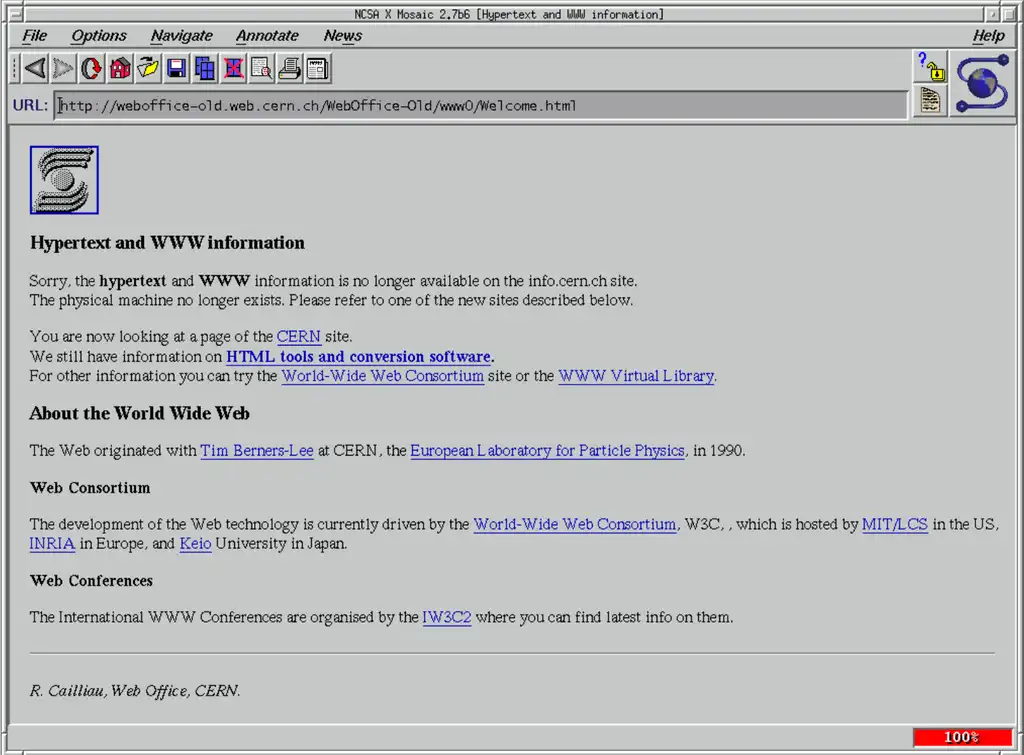
The first graphical web browser, Mosaic, was indeed released in 1993.
Mosaic was developed at the National Center for Supercomputing Applications (NCSA) at the University of Illinois at Urbana-Champaign. It was a significant milestone in the history of web browsing because it introduced a user-friendly graphical interface and made the World Wide Web more accessible to a wider audience.
40. The World Wide Web was invented by Tim Berners-Lee in 1989
The World Wide Web (WWW) was indeed invented by Sir Tim Berners-Lee in 1989.
Tim Berners-Lee, a British computer scientist working at CERN (the European Organization for Nuclear Research) in Switzerland, developed the concept and the initial implementation of the World Wide Web. He proposed a system that would allow information to be shared and accessed over the Internet using a standardized format.
You may also like:
Wrap Up
So, these were some of the most interesting and fascinating facts about computers.
Creating the first computer was nothing short of an engineering marvel. In the current era of digitalization, we can only applaud the genius of the creators, who were much ahead of their times.
How many facts did you already know? Do you know some other interesting facts about computers that we didn’t cover? Let us know in the comment section below!



